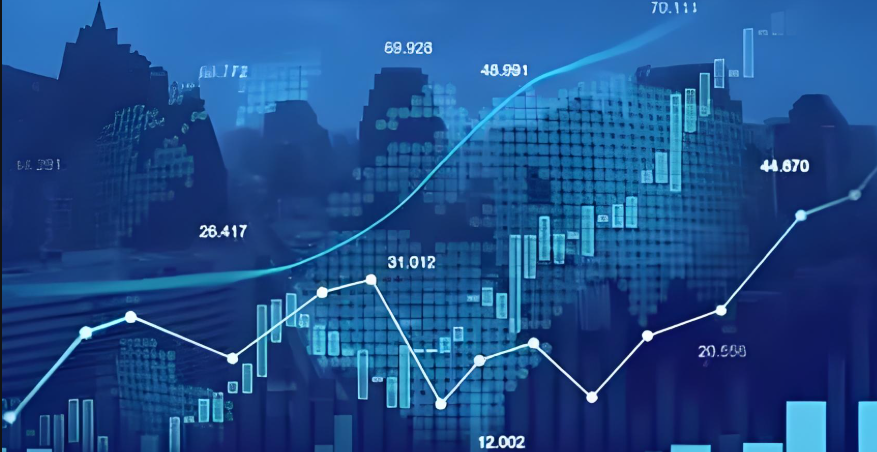Gold and Silver Prices Decline from Highs
Advertisements
On February 11, local time, Jerome Powell, the Chairman of the Federal Reserve, attended a hearing held by the Senate Committee on Banking, Housing, and Urban Affairs. His cautious remarks sent shockwaves through the previously buoyant gold and silver markets, leading to a notable decline in prices from their recent highs.
During the hearing, Powell made it clear that the Federal Reserve plans to complete its review of its framework before the end of summer. Notably, this review will not focus on the 2% inflation target, which the Fed intends to maintain. He also highlighted that the current unemployment rate and conditions in the labor market do not present inflationary pressure. Conversely, he stressed that if the labor market unexpectedly weakens or inflation declines faster than anticipated, the Fed could ease its policies. On the other hand, if economic performance remains strong and inflation fails to move towards the 2% target, the Fed may sustain its policy tightening for an extended period. Crucially, Powell explicitly stated that the Federal Reserve is in no rush to cut interest rates in the near term, indicating that the policy measures are prepared to address risks and uncertainties without needing immediate adjustments.
This stance acted like a bucket of cold water, dousing the market's earlier enthusiasm for a swift pivot to a more accommodative monetary policy. The markets have long been sensitive to the direction of the Fed’s monetary policy, particularly in the delicate balance between inflation and economic growth; even minor shifts can set off a cascade of reactions. Powell's cautious comments significantly cooled expectations for interest rate cuts within the current year.
Prior to his statements, amid economic and financial pressures, it was widely anticipated that the Fed would continue to trend towards easing. The probabilities for a rate cut in the second quarter had been gradually rising, serving as one of the key drivers for the persistent increase in gold and silver prices. Gold prices soared, reaching an all-time high of $2968.5 an ounce for the April contract on COMEX on February 11. However, moments after Powell's remarks, the gold and silver markets swiftly reacted. The COMEX gold futures price plunged after reaching its peak, closing down 0.1% at $2932.6 an ounce; silver prices followed suit and also retreated.

From a deeper financial logic perspective, Powell’s comments influenced market expectations regarding real interest rates. Given that gold is a non-yielding asset, its price exhibits an inverse relationship with real interest rates (nominal interest rates minus inflation). Powell’s cautiously optimistic stance reinforced market expectations for elevated interest rates, leading to rising yields on U.S. Treasuries, which subsequently bolstered the U.S. dollar index, effectively putting downward pressure on gold prices. Additionally, as expectations for rate cuts cooled, the attractiveness of gold further diminished. Investors who had initially bet on the Fed cutting rates in the first quarter of 2025 began to adjust their strategies, leading to a wave of profit-taking amongst long positions and exacerbating short-term selling pressure on gold.
While silver prices generally correlate with gold, they are also subject to their own unique factors. Recently, silver leasing rates surged above 6%, indicating a tightening condition in overseas physical silver markets. However, the macroeconomic impacts of Powell’s speech overshadowed these supportive factors, causing silver prices to also decline alongside gold.
Despite the short-term setbacks for gold and silver prices due to Powell’s remarks, the underlying factors supporting precious metals remain intact. The unclear prospects for global economic recovery, uncertainties in U.S. trade policies, and rising geopolitical risks contribute to sustained demand for gold as a safe haven. With a new U.S. administration expected to assume office in 2025, its series of policy measures, such as imposing tariffs, could further heighten market uncertainties, prompting investors to seek refuge in safe-haven assets; gold's strategic value continues to be evident. Moreover, the demand from central banks and financial institutions for gold has been steadily increasing. In 2024, global central bank gold purchases surpassed 1,000 tons, maintaining historic highs for three consecutive years, and this trend seems poised to continue into 2025.
Powell's cautious words surrounding monetary policy generated immediate ripples in the financial markets, causing gold and silver prices to slide from their highs. However, this price fluctuation reflects merely a short-term adjustment in a complicated and dynamic economic environment, rather than a decisive shift in long-term trends. Moving forward, the trajectories of the gold and silver markets are likely to remain volatile, closely intertwined with various factors, including the Federal Reserve's monetary policy, inflation data, geopolitical developments, and the state of the global economy. Every slight adjustment in the Fed’s policy will influence the flow of capital in the market, which in turn will affect supply and demand dynamics and price directions for gold and silver; the oscillations in inflation data will impact the allure of gold and silver as hedging assets; outbreaks or resolutions of geopolitical conflicts will ignite or suppress market risk sentiment, altering prices for these precious metals; and the overall health of the global economy will directly influence investor preferences towards gold and silver.
Thus, investors must maintain a keen insight into market trends and carefully evaluate multiple factors to make informed investment decisions, allowing them to navigate the complexities of precious metal investments effectively.
Leave Your Comment